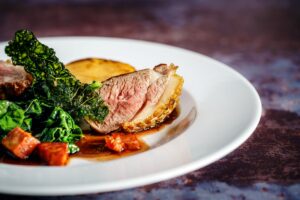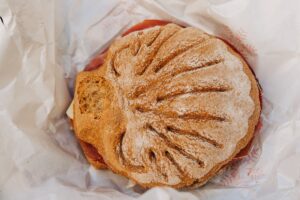Last Updated on November 22, 2025 by Emma Fajcz | Published: March 30, 2022
For centuries, cafes and eateries have been gathering places for families, friends, artists, writers, philosophers, and revolutionaries. While people come and go, some cafes stay put and continue to serve hungry (and thirsty) customers to this day. In fact, there are several historical cafes in Florence that you shouldn’t miss.
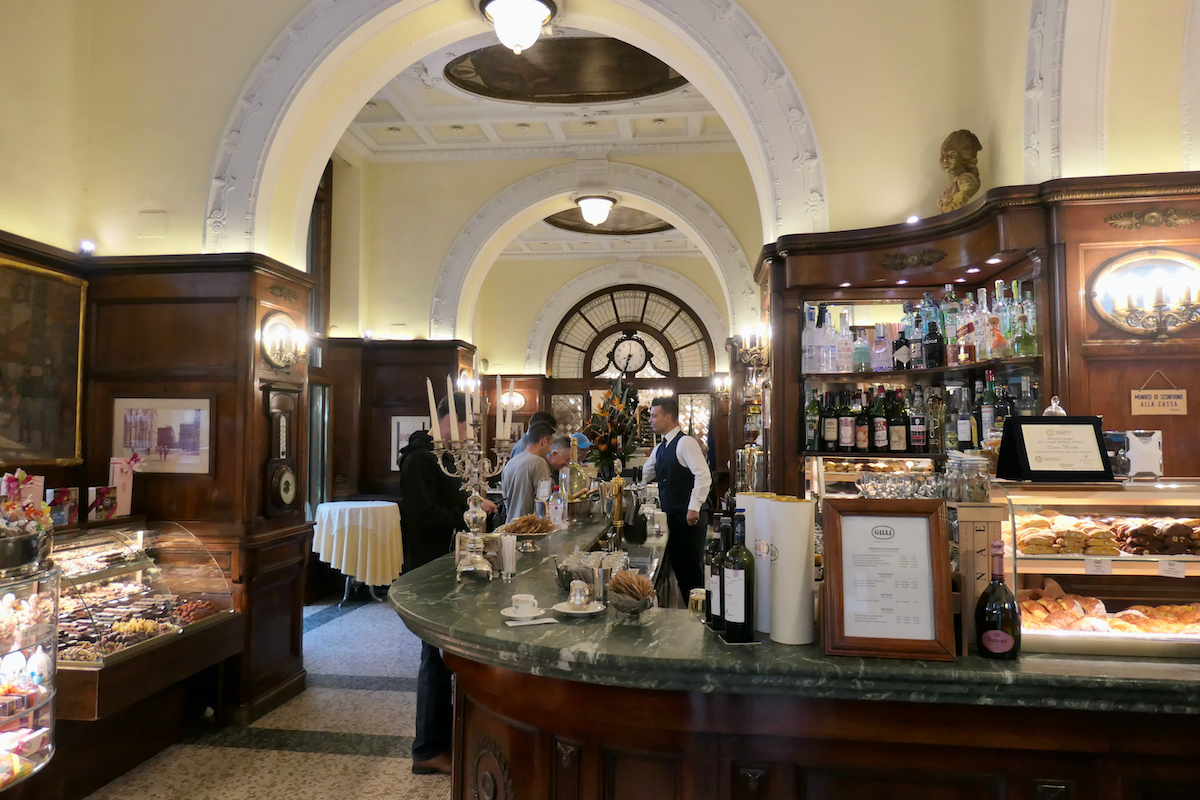
Revolutions have been planned over drinks, famous artists have gathered, and entire movements have taken off in the historical cafes of Florence.
While some watering holes have been lost to time, many historical cafes in Florence remain open and operational. Let’s take a look at three significant historical cafes in Florence and what you should order during your visit!
Caffè Gilli
There’s a reason that Caffè Gilli makes our list of the best coffee places in Florence! This historic site was opened in 1733 by the Swiss Gilli family. They sold “sweet breads, coffee and liquors” in their cafe on Via Calzaiuoli. It soon became a hotspot in the city, necessitating a move to a larger location in 1860 before another Swiss family took over the cafe 30 years later.
The cafe relocated one more time in the 1920s to its present-day location in Piazza della Repubblica. Caffè Gilli was one of the most elegant literary cafes in Florence, becoming a favored meeting spot for artists like Marinetti, Soffici, and Palazzeschi.
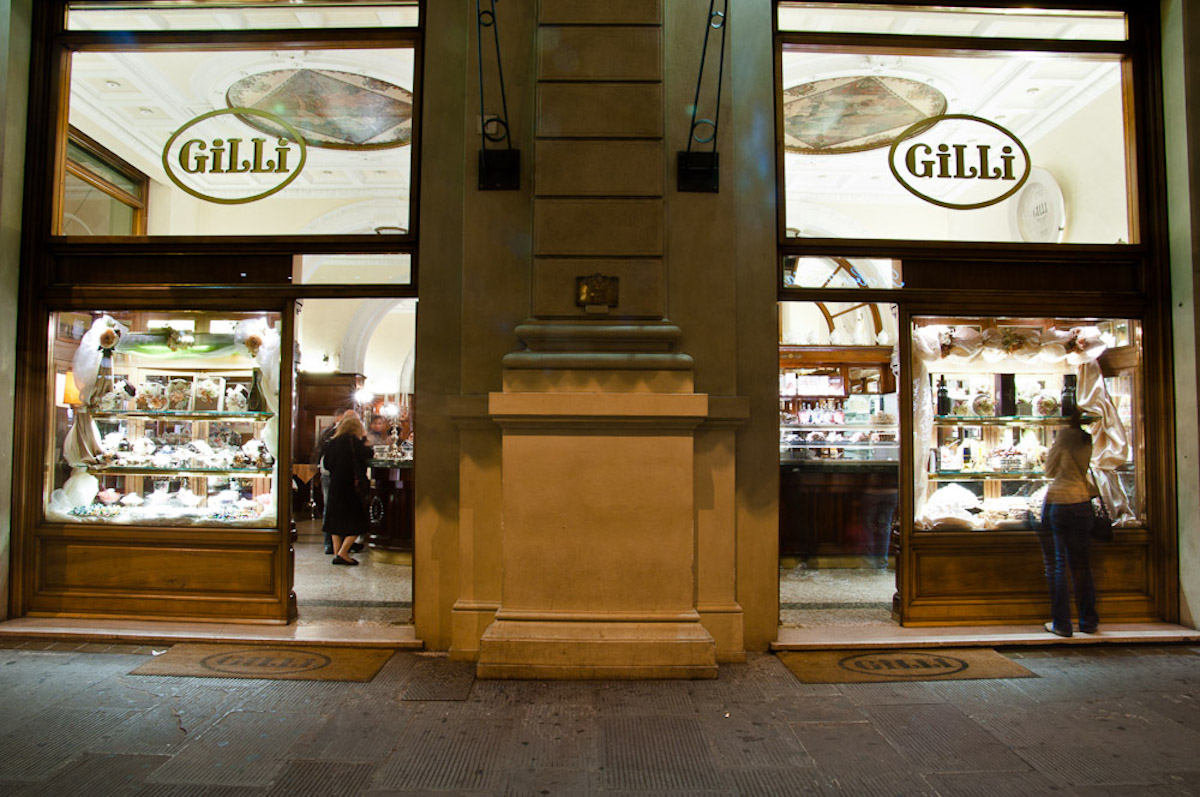
The interior of the cafe is a treat for the eyes as it has conserved the opulent decoration straight from the roaring 20s. It’s worth a visit just to gaze at the ivory-colored walls, Murano glass chandeliers, and painted ceilings. You can’t miss the bar, decorated with one-of-a-kind bronze neoclassical designs made by the famous Coppedè workshop.
Known worldwide for their delicate pastries, you must order something sweet when you visit Caffè Gilli. If you visit around Easter or Christmas, try a single serving of the traditional Italian desserts colombe or panettone. Grab a box of perfectly prepared chocolates and bonbons as a souvenir, but they might not last until you get home!
Insider’s tip: You might recognize the oldest cafe in Florence as the backdrop of the famous photograph “American Girl in Italy 1951” by Ruth Orkin.
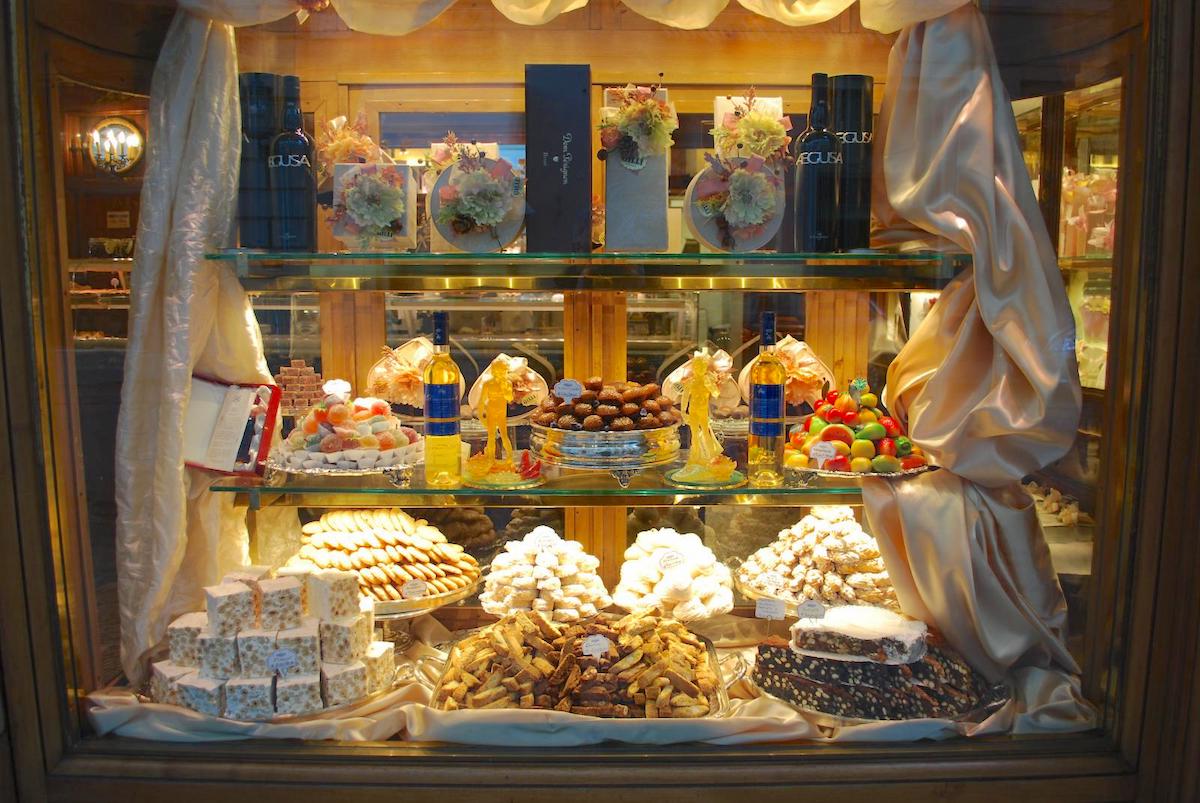
Caffè Concerto Paszkowski
Also located in Piazza della Repubblica is Caffè Concerto Paszkowski. The location opened in 1846 as “Caffè Centrale.” The Polish Paszkowski family took over in 1904, transforming the space into a brewery and cafe that offered live musical entertainment called “coffee concerts.”
Similar to its neighbor Caffè Gilli, Caffè Paszkowski became a popular literary cafe in the early 20th century, welcoming progressive thinkers, writers, and artists of the era. Musical performances back then were cabaret-style, including an all-women orchestra–a revolutionary concept at the time.
Following the Second World War, the space was redesigned and modernized. The interior contains sprawling dining rooms with Art Deco accents, with walls of fine wood adorned with large paintings. The beautiful Caffè Concerto Paszkowski is an elegant backdrop for musical performances, conventions, and even fashion shows.
Warm up in one of the tea rooms during the winter, or relax under the covered outdoor seating in the warmer season. You can enjoy all three meals at Caffè Paszkowski, as well as a fine selection of pastries and sweets any time of day.
Fully supporting the 1920s vibe is the huge wraparound bar, where you can order a masterfully mixed cocktail. Caffe Concerto Paszkowski is an unforgettable stop on your tour of historical cafes in Florence.
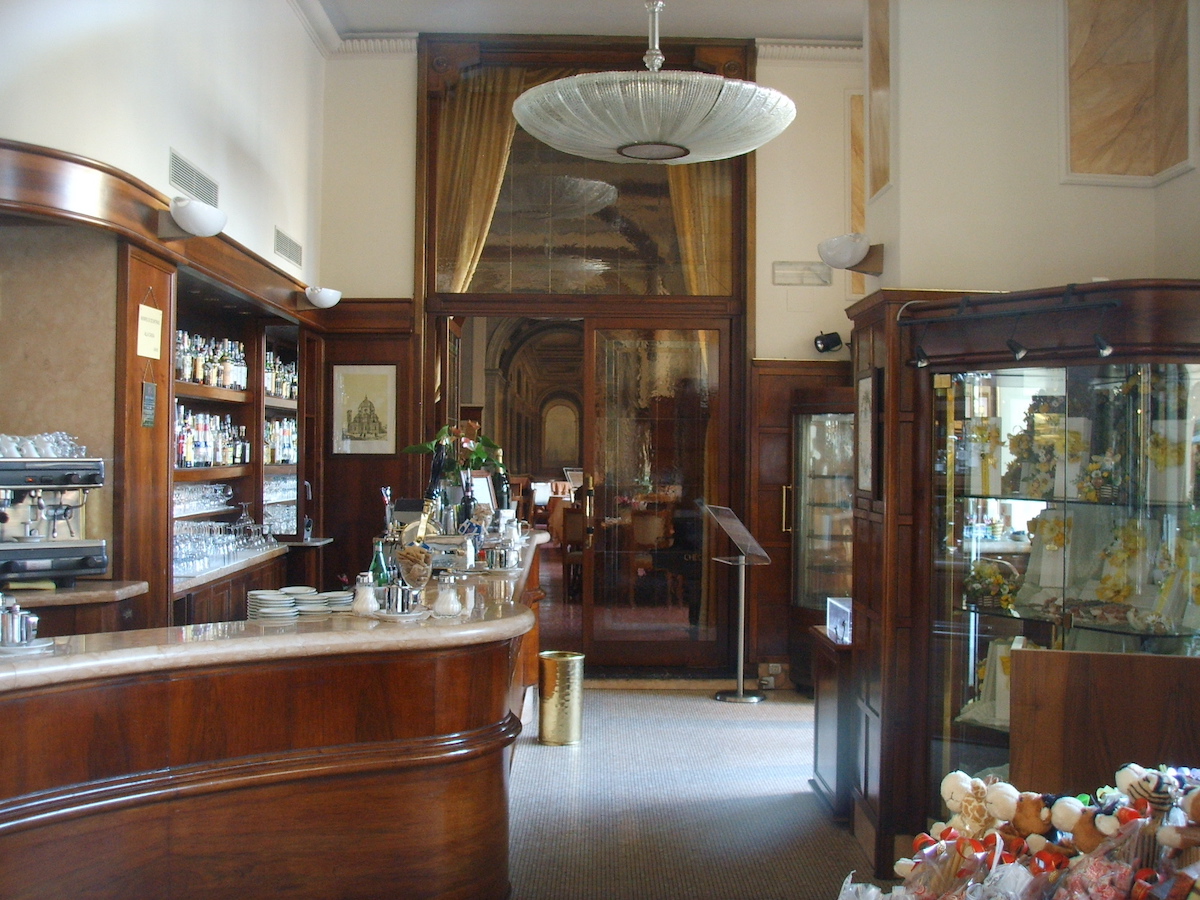
Rivoire
One word: chocolate. Rivoire is a can’t-miss historical cafe in Florence for the chocolate lover!
Torinese master-chocolatier Enrico Rivoire worked for the Royal House of Savoy in the 1800s. When the royal court decided to move from Turin to Florence, Rivoire came along and decided to open a shop to share his mastery with the public. The Rivoire cafe was born, opening the doors of its location in Piazza della Signoria in 1872.
Florentines could finally experience “chocolate in a cup,” a.k.a. hot chocolate, in addition to hand-held chocolates and other sweets. Artists, politicians, celebrities, and other notable people came in droves to enjoy the delights Rivoire made while admiring the artwork in the piazza.
Management of the cafe has changed hands over the years, but the dedication to high-quality chocolate products has never faltered. Rivoire roasts its own cocoa beans and offers an impressive line of original products, including chocolates, spreads, jellies, and cookies.
No longer a sole chocolatier, Rivoire is also a gourmet restaurant offering fine chef-prepared dishes of re-imagined traditional Tuscan recipes.
The cafe maintains early 20th century furnishings with its rose-colored plush chairs, fine wood bar, marble floors, and seasonal decorations. Rivoire is a great spot to cool your heels with your kids over a mug of hot chocolate, or a cocktail for mom and dad. Don’t forget a box of chocolates to take home!
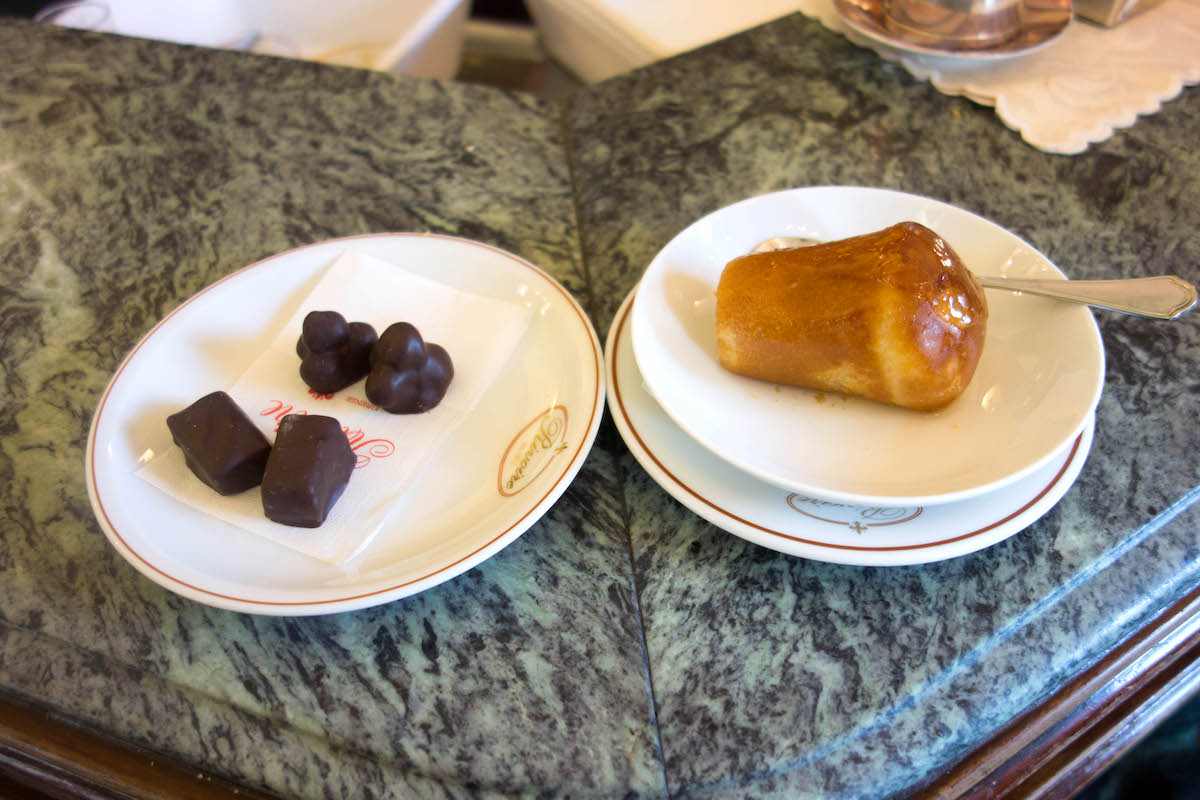
Experience International Cuisine Like a Local
Join one of our top-rated food tours that are offered in many cities throughout the world! With the help of our expert local guides, you’ll get to see, hear, and taste your way through these cities and learn about their fascinating histories and cultures. Many of our food tours have a gluten free option as well!

